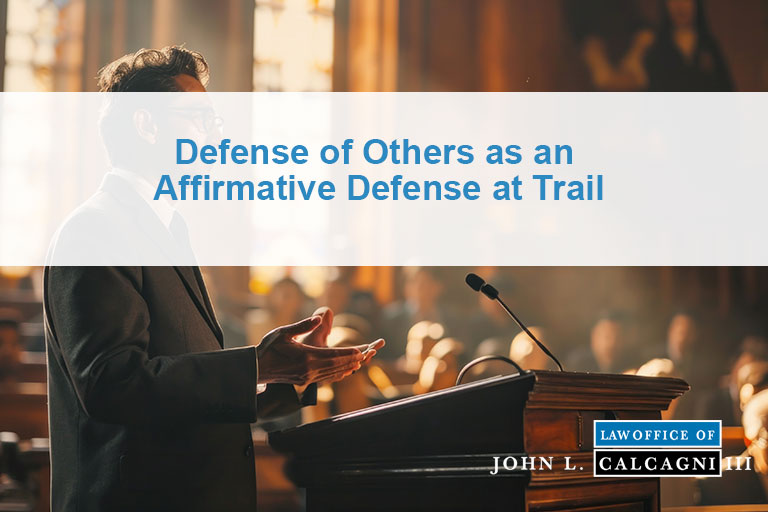Defense of Others as an Affirmative Defense at Trail in Rhode Island

Understanding Affirmative Defenses in Criminal Law
The criminal law recognizes few affirmative defenses. A person accused of a crime may be legally justified in committing the crime where an affirmative defense applies. This article will discuss Defense of Others as an affirmative defense that may be raised at trial.
The Basis of Defense of Others: Self-Defense
To understand Defense of Others as an affirmative defense, it is important to first review and understand the law of Self Defense, from which Defense of Others evolved. Self-Defense provides that a person may defend himself whenever he reasonably believes he is in imminent danger of bodily harm at the hands of another.
A person may claim the right of self-defense only if he actually believes he is in imminent danger of bodily harm and his belief was reasonable. Where the person subjectively and objectively holds this belief, he may use an amount of force that is reasonably necessary to protect himself from the perceived threat. This may include:
- punching
- kicking
- shoving
- pushing
- grappling
- wrestling
- and other forms of non-deadly force
What is considered reasonable and necessary force is determined by the totality of circumstances, on a case-by-case basis.
When Deadly Force is Permissible in Self-Defense
In some circumstances, a person may use deadly force to protect himself. Deadly force is an amount of force that is likely to cause death or serious bodily injury. A person may only use deadly force where he believes he is in imminent danger of death or serious bodily harm from another. Some states require the person to retreat or attempt to retreat before using deadly force in self-defense.
Other states permit a person to stand their ground, that is, not requiring an attempt to retreat before using deadly force.
Examples of self-defense include force that involves guns, knives, obvious weapons, or any non-obvious weapon used against another person in a manner that is reasonably likely to produce death or seriously bodily harm.
Extending Self-Defense to Protect Others
The Defense of Others affirmative defense applies the principles of self-defense. In order for a defendant to invoke the Defense of Others doctrine, the other person sought to be defended must have had the right to act in self-defense.
The defendant must actually and reasonably believe the other person was in imminent danger of bodily harm, and in response, the defendant acted through the reasonable use of force to shield the other person from the perceived threat.
Defense of Others also entitles the actor to use deadly force, if he actually and reasonably believed the other person sought to be protected was in imminent danger of death or serious bodily harm.
Legal Implications of Defense of Others in a Criminal Trial
In a criminal trial, the defendant is not required to prove that he acted in defense of others. However, where evidence of defense of others is raised, the prosecution must prove beyond a reasonable doubt that the defendant did not act in defense of another person or persons.
This can be done by showing that the defendant’s fear that the other person was in imminent danger bodily harm was unreasonable and/or the amount of force used to defend that person greater than necessary under the totality of the circumstances.
Seeking Legal Help for Defense of Others
If you have been accused of a victim-based crime, you may be entitled to justify your conduct using Defense of Others as an affirmative defense. Contact Top Rhode Island Criminal Defense Lawyer, John L. Calcagni III, today at 401-351-5100.
